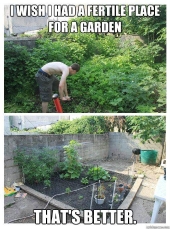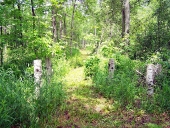

Lloyd George wrote:I don't worry about the buzzwords...I farm..call it what you will, I will still farm...I am not trying to make a buck off of it...just feed my family, and whoever else it strikes my fancy to feed.


Brenda Groth wrote:thanks for the encouragement..I have planted hundreds of trees ..I try to plant 20 or 30 every year on our property..and a lot of them will likely never fruit in my lifetime (61 now) however..if I live to be over 100 I should get some food from them (if I still have enough teeth to eat nuts, right now I still have a full head of teeth)

John Polk wrote:Though many users here are opposed to tilling, one of those mini tillers, such as the Mantis can be very handy. If you ever need to run underground plumbing or elect to a shop, barn, coop or raised bed, they will save you hours of hand digging a trench, especially in heavy clay soils. Also, if you have just had the plot surveyed, run it from stake to stake, and you will have just created a semi-permanent boundary marker line, which will be particularly helpful if you plan on building a living fence as your perimeter fence.
[Disclaimer: this paragraph is my humble opinion...others may/will disagree]
Tilling repeatedly is very harmful, but doing it once on virgin soil, should create a richer tilth that will only get better as time marches on.
They are useful for breaking new ground. For double digging, make one pass, and then shovel all of the loose dirt out. Then fill (or half fill) the hole with compost or green manure (a half-half mixture is probably best...provides both humus and food!). Now make your second pass, (to incorporate the amendments into your subsoil,) then shovel your original, amended soil back on top. The billions of soil creatures that were killed in the process will more than be replaced. The survivors, now in a better environment should more than double the previous population within a season. You have now created a better environment for them. You will have life in your subsoil, which creates a healthier top soil (and will itself become part of your topsoil in a season or two).



